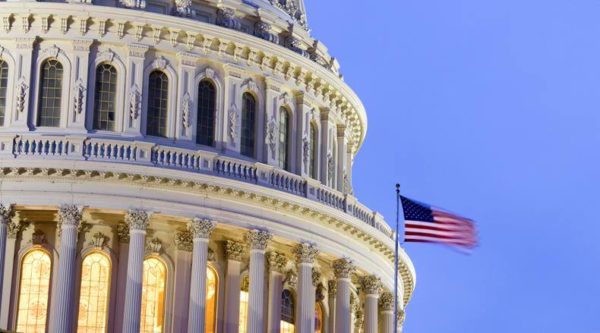
- Details
- By Levi Rickert
Opinion. Unless the lame duck Congress acts, the Special Diabetes Program for Indians (SDPI) is due to expire on December 31, 2024 and funding will cease.
Funding for the SDPI program is critical in Indian Country because American Indians and Alaska Natives (AI/AN) have a higher prevalence of type 2 diabetes than any racial or ethnic group in the United States.
However, thanks to SDPI, that statistic is improving.
The SDPI was first established in 1997 when Congress appropriated $30 million annually for "the prevention and treatment of diabetes in American Indians and Alaska Natives." Today, the annual appropriation is nearly $150 million.
According to the National Indian Health Board, federal data show the rate of kidney failure decreased by 50 percent after the implementation of population-based diabetes treatment and prevention services like SDPI.
SDPI has been one of the most successful programs ever created to reduce the incidence and complications due to Type 2 diabetes. Communities with SDPI-funded programs have seen substantial growth in diabetes prevention resources, and, for the first time, from 2013 to 2017, diabetes incidence in the AI/AN population decreased each year.
In addition, the average blood sugar level, as measured by the hemoglobin A1C test, decreased from 9.0 percent in 1996 to 8.1 percent in 2014 in the American Indian and Alaskan Native population, resulting in reduced risk of eye, kidney, and nerve complications.
In the SDPI 2020 Report to Congress titled “Changing the Course of Diabetes: Charting Remarkable Progress,” the Indian Health Service (IHS) reported for the first time, diabetes prevalence in Native American adults decreased and had done so consistently for four years – dropping from 15.4 percent in 2013 to 14.6 percent in 2017. The IHS said neither the general U.S. population, nor any other U.S. racial/ ethnic group had shown a decrease in prevalence.
Also in the report, IHS said diabetes-related kidney failure dropped by 54 percent in AI/AN adults between 1996 (57.3 per 100,000) and 2013 (26.5 per 100,000), a greater decrease than for any other U.S. racial/ ethnic group. Recent research shows that these improvements have been sustained. This represents a substantial reduction in the number of AI/AN people who have to go on dialysis or receive a kidney transplant.
Additionally, hospitalizations for uncontrolled diabetes among AI/AN adults dropped 84 percent from 57.9 per 100,000 in 2000 to 9.4 per 100,000 in 2015. Reducing the need for hospitalizations obviously lowers health care costs.
SDPI Saves Funding Otherwise Spent
Over time, this highly successful program actually saves funds that would have otherwise been spent. Since the 1990s, the prevalence of diabetic eye disease (retinopathy) has fallen in Native Americans by more than 50 percent, which has substantially reduced the risk of vision problems and blindness in AI/AN with diabetes. This reduction alone is estimated to have saved $520 million between 2006-2015.
The positive results show that the SPDI funding is money well spent. Spread over 35 states, SDPI serves 780,000 American Indians and Alaska Natives across 302 programs.
On November 12, 2024, 55 Senators sent a letter to Senate leadership urging the reauthorization of the Special Diabetes Program (SDP) and the Special Diabetes Program for Indians (SDPI) before funding expires on December 31, 2024.
The letter, led by Senator Susan Collins (R-ME) and Senator Jeanne Shaheen (D-NH), advocates for renewing SDPI funding at $160 million or more annually. It underscores the program's history of flat funding since its inception in 1997, highlighting the need for increased investment through the 2024 reauthorization.
SDPI delivers culturally tailored care and supports life-saving diabetes prevention and treatment efforts at Indian Health Service facilities, including 31 Urban Indian Organizations. This bipartisan initiative has significantly improved long-term health outcomes in Indian Country and remains a vital program deserving of Congress's immediate attention.
Clearly, the SDPI program saves funds that would otherwise be spent on other health-related care. In addition to saving funds, the SDPI has proven successful because it improves quality of life for Native Americans with diabetes and ultimately saves lives.
Native Americans need to heed a call to action to call or write to you U.S. senators and representatives in Congress to ensure they approve the renewal of SDPI that helps us throughout our tribal communities.
Thayék gde nwéndëmen - We are all related.
Create your own user feedback survey
More Stories Like This
Extending the Affordable Care Act Is a Moral Imperative for Indian CountryAll Is Fair in … War?
Why Federal Health Insurance Policy Matters to Cherokee Nation
The Absence of October's Job Report Shows Why Native American Communities Need Better Data
Tribal IDs Are Federally Recognized. ICE Agents Are Ignoring Them.
Help us defend tribal sovereignty.
At Native News Online, our mission is rooted in telling the stories that strengthen sovereignty and uplift Indigenous voices — not just at year’s end, but every single day.
Because of your generosity last year, we were able to keep our reporters on the ground in tribal communities, at national gatherings and in the halls of Congress — covering the issues that matter most to Indian Country: sovereignty, culture, education, health and economic opportunity.
That support sustained us through a tough year in 2025. Now, as we look to the year ahead, we need your help right now to ensure warrior journalism remains strong — reporting that defends tribal sovereignty, amplifies Native truth, and holds power accountable.
 The stakes couldn't be higher. Your support keeps Native voices heard, Native stories told and Native sovereignty defended.
The stakes couldn't be higher. Your support keeps Native voices heard, Native stories told and Native sovereignty defended.
Stand with Warrior Journalism today.
Levi Rickert (Potawatomi), Editor & Publisher


